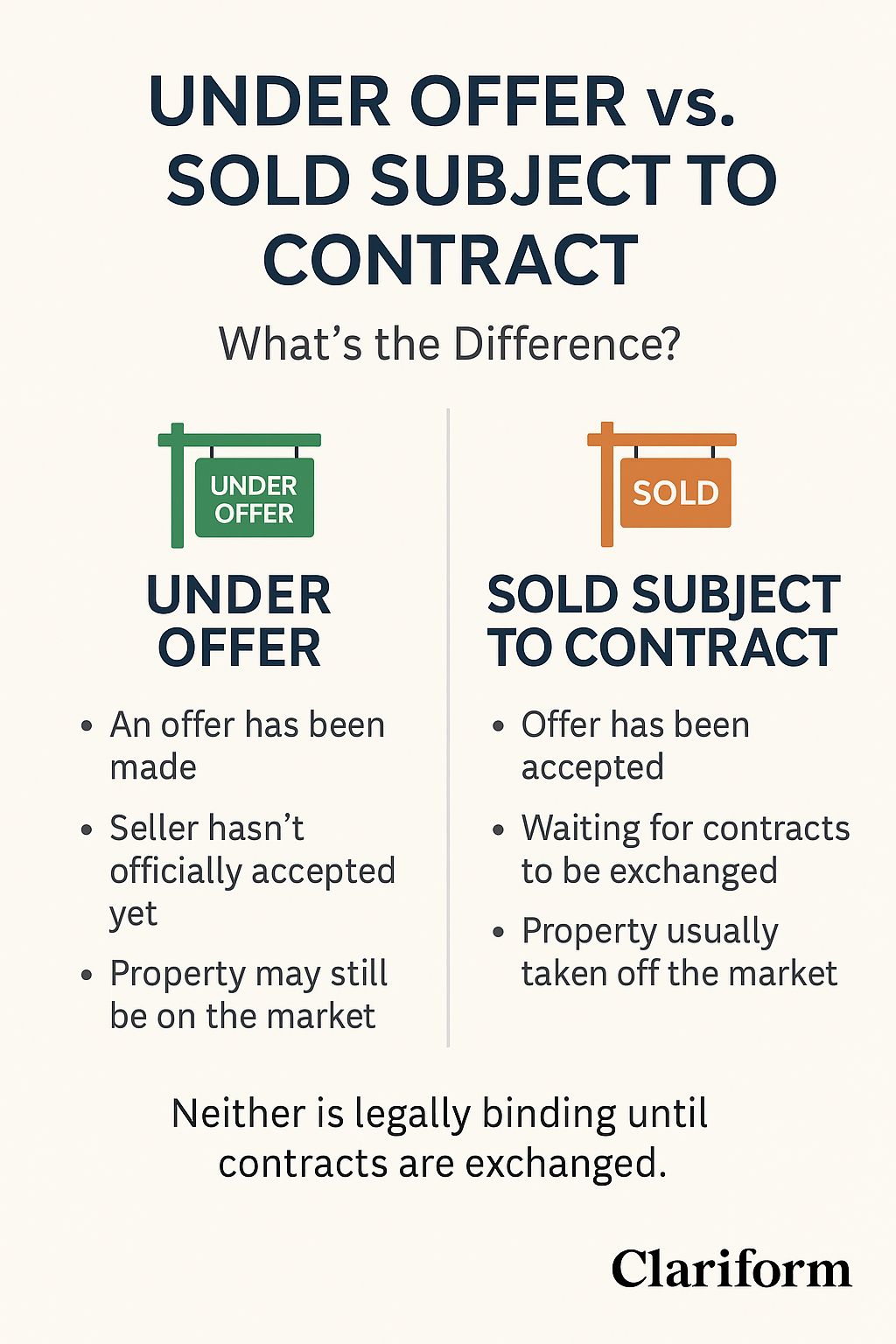Introduction
If you’ve been browsing property listings in the UK, you’ve probably come across the phrases “Under Offer” and “Sold Subject to Contract (SSTC)”. They might sound similar, but they carry slightly different meanings in the housing market. Understanding these terms is important for buyers and sellers alike because it helps set the right expectations when making or accepting an offer.
This article breaks down what each term means, how they differ, and what you should keep in mind when you see them on listings — all in simple, non-legal language.
What Does “Under Offer” Mean?
When a property is marked as “Under Offer”, it means that:
- A buyer has made an offer on the property.
- The seller has not yet formally accepted or signed contracts.
- The property is still technically on the market, and other buyers may be able to make competing offers.
In other words, “Under Offer” signals interest but not certainty. Think of it as the first step in the negotiation process.
What Does “Sold Subject to Contract (SSTC)” Mean?
A property labelled as “Sold Subject to Contract” (SSTC) has gone one step further:
- The seller has accepted an offer from a buyer.
- The property is taken off the open market (in most cases).
- The sale is still not legally binding until contracts are exchanged.
This is a common stage in UK property transactions — both buyer and seller are moving forward, but either party can still withdraw before contracts are signed.

Key Differences Between “Under Offer” and “SSTC”
| Feature | Under Offer | Sold Subject to Contract (SSTC) |
| Stage in Process | Offer made, not formally accepted | Offer accepted, awaiting contract exchange |
| Market Status | Usually still open to other offers | Typically taken off the market |
| Buyer/Seller Commitment | Early interest | Stronger commitment, but not legally binding |
| Risk of Falling Through | Higher | Lower (but still possible) |
Why These Terms Matter
For buyers:
- “Under Offer” means you might still have a chance to put in an offer.
- “SSTC” means the property is likely going ahead with another buyer, but the deal is not final until contracts are exchanged.
For sellers:
- Marking a property “Under Offer” helps show that interest exists but keeps the door open for backup offers.
- Moving to “SSTC” helps reassure buyers that progress is being made, which can build confidence in the transaction.
FAQs
❓Can I still make an offer if a property is Under Offer?
Yes, most sellers will still consider other offers at this stage.
❓What about if it’s SSTC?
It’s possible but less common. Some sellers may entertain new offers, but most prefer to proceed with the accepted buyer to avoid delays.
❓Is SSTC legally binding?
No. A sale only becomes legally binding once contracts are exchanged. Until then, either party can withdraw.
Conclusion
Both “Under Offer” and “Sold Subject to Contract (SSTC)” describe stages in the UK property selling process, but they reflect different levels of progress. The key thing to remember is that neither status is legally binding — a deal is only secure once contracts are exchanged.
If you’re buying or selling, it’s useful to know the difference so you can manage expectations and avoid misunderstandings.
Buying or renting in the UK as an immigrant or investor can be tricky. Clariform gives you clear, trusted insights — from housing to immigration and finance.












